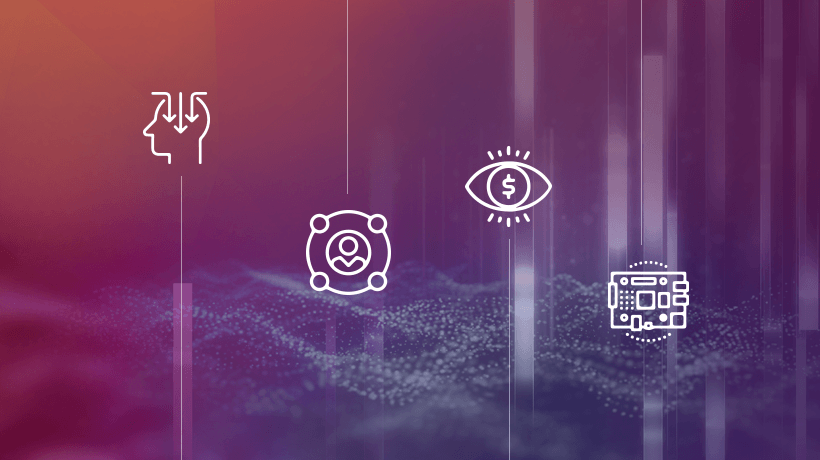Implementing Emerging Tech In Your Business? What You Need To Consider
Emerging technologies are creating a big buzz in the field of Learning and Development (L&D). Learning modalities such as Virtual Reality (VR), Augmented Reality (AR) and Artificial Intelligence (AI) are becoming more cost-effective, which, in turn, makes them more easily accessible and attractive to the mainstream. As a result, implementing emerging tech is looking like a better idea for companies that seek to improve their training programs. However, before implementing courses driven by emerging technology, company leaders and Instructional Designers (IDs) must consider 4 things that will determine whether a technology-assisted learning program is a right fit and, if so, which type of technology will be most effective.

Let’s take a look at these 4 things:
1. It’s All About Learning, First And Foremost
When implementing emerging tech in L&D, remember that your main focus should be the learning, not the technology. Failing to make learning the top priority of a technology-assisted course can take away from the learning experience. Although the technology enhances the training lifecycle, it shouldn’t be the main focus of the course. "It’s important to ensure that you’re picking the right technology for the right reason, and not just because it’s cool", says Justin Mitchell, Creative Engineer at SweetRush. "Emerging technologies are great because they enhance traditional learning, which allows for better comprehension, and because they make it possible to replicate experiences that would be difficult to repeat."
Before choosing an emerging technology, ask yourself the following questions:
- Would it be possible to replicate the experience in real life?
- Would it be inexpensive to replicate in real life?
- Would it be safe to replicate in real life?
If you answer 'yes' to one or more of these questions, emerging tech may not be a great fit for your project.
2. Whose Audience Is It, Anyway?
You should consider your audience before you begin developing a tech-assisted L&D project, just as you should when developing any learning program. Are your learners tech-savvy, or do they struggle with changes in technology? If they lean toward the latter, a VR program may not be the right fit for your organization, or you may need to be careful about how you introduce it. "It’s the normal process you would follow when you consider any other learning modality", says Mary Gannon, Ph.D., a Senior Learning Strategist at SweetRush. "You need to take into account what content you want to cover, what type of learning, the costs in time and money, and the availability of people who would help develop it. However, one important difference is that you need to consider your audience’s experience with technology and, especially, their willingness to adapt to it, because some people don’t like change." A good developer will design the program so the user’s learning curve can be overcome rapidly. By taking small steps and allowing employees to acclimate to the technology, IDs can avoid alienating learners. And because the new tools are fun and engaging, people usually learn how to use them pretty quickly. As Gannon says, if people in your audience feel hesitant or resistant about technology, the focus of your course may shift from the subject at hand to learning to use the new tools.
3. Real Bang For Your Virtual Buck
Balancing a budget is important in any project; however, it’s particularly delicate when you’re developing a technology-based learning program. Ever heard of scope creep? It’s easy to get excited about all the features you can add and end up spending way too much. Understanding the medium is key to keeping your budget on track. For instance, VR designers and developers are constantly striving to achieve – and elevate – the feeling of being in and experiencing a virtual environment; this is called "presence". You, however, don’t necessarily need to design the most lifelike graphics; your brain can fill in some of the gaps in quality without ruining the experience. "Crafting effective VR learning programs requires careful consideration of where to invest in quality and detail so you can achieve and maintain the presence throughout the experience", says Danielle Hart [1], Director of Marketing at SweetRush. "Budgets for Learning and Development projects using VR are much lower compared with VR applications for marketing or entertainment. Hence, balancing presence and budget becomes an essential skill for learning designers and developers."
4. The Hardware Elephant In The Room
When implementing emerging tech in your learning programs, the simple fact is that you need hardware to use technology. And there’s a lot to consider. A report by Deloitte [2] lists several hardware-related issues, such as computational power for the development process, battery life, price point, and even comfort of the headsets used in VR or availability of mobile devices in AR. As of this writing, there’s no one-size-fits-all solution for hardware at this point in time. "In most cases, your budget will guide you to the most appropriate hardware options", says Adrian Soto, Project Manager at SweetRush. "You also need to think about scalability, as a bigger project will require greater computer horsepower and more pieces of hardware, like headsets. Finally, you should always consider the physical space where you'll deploy the project. Will there be enough room for a VR display in a classroom with 20 students?" Working with your developer, you can review these considerations and others to identify the best hardware solution for your learning program. The good news is that with the popularity of VR and other emerging techs, new hardware is becoming available all the time, which means we’ll continue to see more cost-effective options. Emerging technologies open up amazing opportunities for L&D professionals. Even so, before you implement them it’s important to ask yourself whether the technology is going to add to the learning or take away from it. These are new and exciting tools to be sure, but at the end of the day, they’re still just some of many tools in your L&D toolbox. Stay tuned for more insights about technology trends and their impact on the L&D from the SPARK team at SweetRush.
Download the eBook Top Emerging Technology Trends And Their Impact On L&D to see how the development of virtual reality and augmented reality can initiate a new way of thinking for L&D professionals. Learn why they are new compelling tools in teaching and affecting behavioral change and how they can help you achieve your business objectives.
If you want to learn more about the excellent features you need to realize Virtual Reality in your organization, check out the webinar Virtual Reality: Real-World Hilton/SweetRush Project Case Studies. It is brought to you by SweetRush and explains everything you need to know to run an exceptional VR learning program.
References:
- Virtual Reality for Learning: Balancing Budgets and Presence
- Momentum is building for augmented and virtual reality in the enterprise









